|
Score: 94/100 (9.4 out of 10)
Edgar Allen Know and His Big Busy Brain is a conceptually brilliant and well-illustrated children's book by Rahni Davies, illustrated by Barbara Owczarek. The book follows a young boy named Edgar Allen, inspired by the poet of the same name, who is imaginative, creative, and brilliant. Accompanying his extraordinary nature, he seems to suffer from a range of possible learning disabilities, mental illness, or conditions including ADD, ADHD, OCD, Asperger's, and/or depression. Edgar Allen Know and His Big Busy Brain is an intriguing and inspiring children's book that reminds parents and children alike that even those who suffer from conditions that make them seem “different” can be phenomenal human beings. While this is a rather common theme or topic in children's books, it's no less powerful here. In fact, it's presented in a rather unique and special way. The book doesn't beat you over the head with Edgar Allan's condition(s) or attempt to be preachy about a particular message. Instead, this book is very subtle, patient, and trusting of the audience to “get it” without having to be told. We commend and appreciate that! This book is also a reminder that many brilliant and successful people throughout history—if not most of them—had something presumably “wrong” with them. Many of them suffered from something, diagnosed or not. However, they were brilliant and successful despite of the things they suffered from. The poet Edgar Allan Poe is a good example. He was someone who very likely suffered from depression (at the very least) following multiple major deaths in his life including his parents and wife. However, his depression carried and inspired him to write some of the most memorable lines of poetry in the English language. This is an experience shared by many writers and creators. Anne Rice once said that we should write from where the pain is. Pain, suffering, and struggling aren't always a bad thing. Sometimes they push and motivate us toward bigger and better things. Sometimes they make us stronger. Sometimes they teach us things. We see that in Edgar Allan's experiences, especially when he struggles to ride a bike and starts to believe that his failures are socially unacceptable. He takes this especially hard and begins to think that HE is socially unacceptable. It's hard not to empathize, sympathize, and feel for Edgar Allan. Everyone who has failed at something (which is all of us) knows that feeling. It's hard not to take it hard. It's hard not to get down on yourself. However, failures can teach us the best lessons. Something that this book does well is to show the affects of having a strong circle of support and people around you who encourage and lift you up when you are feeling down. It's a powerful message to the people in those types of circles that what they do really matters. Case in point: Edgar Allan's mother recognizes that something is wrong and is able to encourage and lift him up. She's able to give him a better perspective on things. This is in stark contrast to the real-life poet, Edgar Allan Poe, who did not receive much support from his foster parents and was missing his biological ones. Edgar Allan, in this book, is able to find the courage and inspiration to push forward and finally learn to ride a bicycle. Something else that stands out about Edgar Allan is that he's a quirky and “strange” person who still manages to be cool. His brilliance comes through with his knowledge of history and of strange things like the correct temperature of hot cocoa. What really carries this book is the awesome art-work by Barbara Owczarek. Funny enough, Edgar Allan is the worst or most simplistically illustrated thing in this book—everything else is sharp and detailed, particularly the animals and backgrounds. There are so many great Easter eggs in the illustrations in this book. The ravens themselves are Easter eggs. There are also hints that allude to Edgar Allan's interests and character including various books about science and toys related to different sciences. He also has a fascination with bicycles, which is interesting despite struggling to ride one. All in all, this is a really fascinating children's book. Check it out on Amazon!
0 Comments
Score: 84/100 (8.4 out of 10)
Surfer Moon by Domenic Melillo embodies both the surfer culture and music of the 1960s like no other short-story we've read. This short-story definitely stands out as both ambitious and inspired. It is really only held back by issues with formatting and some slight grammatical oversights. It is also a bit convoluted for a short-story, cramming a novel's worth of content and character development into less than 30 pages. It does, indeed, feel rushed at times. Beside these issues—which can usually be fixed in the editing stage--Surfer Moon offers readers a lot to sink their teeth into. The story follows a young Brian Wilson, a founding member of the Beach Boys, as he encounters someone he profoundly inspired through his music, Duke Armstrong. Duke Armstrong, according to this book, is a legendary surfer who previously prided himself on riding an 80-foot monster of a wave. At the beginning of this story, both Duke and Brian seem to be at a low point in their lives, especially Duke. Duke appears to be—to make a Moby Dick reference—on his last leg. There are allusions to him potentially being an amputee, although it is really his spirit (rather than his body) that is the most damaged. He has seemingly lost the will to live and has become disillusioned with the life he chose (that of a Californian surfer). He makes a suicidal attempt to ride a 100-foot rogue wave, fully expecting to ride or die. The reasons for Duke doing this are explored as the narrative progresses. Nonetheless, through a crazy set of circumstances that is frankly a little difficult to comprehend, Duke finds himself in 1964 having been rescued from drowning by a kid who turns out to be a young Brian Wilson (before Wilson's music career took off). This is due to what's apparently a “crazy metaphysical quantum impossibility” which is either time-travel in a scientific sense or “magic” caused by a lunar phenomenon (the titular “Surfer Moon”). Brian and Duke form the crux of the book, equally inspiring and fascinating each other. Brian, it turns out, is having a bit of an existential crisis of his own. Brian is not aware that someday his music will entertain and inspire Duke and millions of other people, creating its own subculture. As far as Brian knows, he's a nobody who is trapped in a hamster wheel similar to how Duke feels about his surfing career. Incredibly, the two are able to learn more about themselves and find purpose again. It actually becomes a very heartwarming story. Another way in this book succeeds is in capturing the zeitgeist or spirit of an era, showing us a unique and defining moment in history. The mid to late 60s were a very turbulent time, one of the tensest in our nation's history. It's interesting to note that in the midst of all the wildness of the Vietnam War, Cold War, and civil rights movement, the surfer subculture had emerged to take the American mind to a place where it could escape from a harsh reality. Brian and the Beach Boys were able to give Americans (and people around the world) a welcomed relief from a dreary existence full of conflict and strife. This book also includes and starts with a fascinating metatextual letter between Moondoggie and Gidget from the novel Gidget, the Little Girl with Big Ideas by Frederick Kohner. While on the surface, the letter appears to not be directly related to the events of this story, it actually shares many of the same themes and ideas. Moondoggie, like Duke and Brian, fell in love with the idea of the surfer boy/surfer girl who grows up on the beach and makes a living on the waves. Kohner's work, it can be argued, inspires Brian who later inspires Duke (and vice-versa). It also explains why a young man would fall in love with surfer culture or the surfer lifestyle. It's the same reason why a chivalrous knight would want to become a chivalrous knight, or why a high school football player might want to become a high school football player—because it's cool, it's fun, it's appealing, there's a status associated with it, and—perhaps most importantly—because of the girls. Gidget embodies the ideal or dream girl sought after in this scenario. The irony is that, like with a lot of hobbies and passions that men delude themselves into while pursuing women, men often find that most women are far less interested in those things than the media would make them appear. This would also help to explain why Duke feels so betrayed and disillusioned by being unmarried following decades of surfing. In his mind, he has failed to achieve the ideal. Gidget doesn't just embody a dream girl to a young boy, but she also represents freedom, passion, adventure, risk, and fun—the things that would appeal to a young man, but not necessarily to an older one with a bad lower-back, busted hip, and a more cautious approach to life. This story has a lot of good to offer. However, it does have quite a few weaknesses. The absence of indentations between paragraphs is particularly problematic when a story or book includes a lot of dialogue, which this story does. This makes it more challenging to determine when one person/party is speaking over when another person/party is speaking. Something else we noticed is that there are quite a few grammatical errors. There are times like on page 11 when “first of all” or “first off” is written as “first of.” There are times when two question-marks or exclamation-marks are used, something that a novice writer would do in an SMS text-message versus what a professional author (like Melillo) would be expected to do in a professional work. There are times like on pages 17 and 18 when the comma or period occurs outside the quotation mark, or on page 21 when the comma or period is missing from the quote altogether. This actually happens twice on the same page for some reason. There's also a rather humorous fact that this book begins with “Chapter One” yet includes no other chapters, essentially ending at the end of one. This seems to be an oversight. The grammatical and formatting issues also appear to be oversights that could have been caught with some proofreading or rewriting. With all those criticisms aside, this story still has a lot of heart and intrigue. Score: 95/100 (9.5 out of 10)
Henri and the Magnificent Snort is an excellent children's book for all dog lovers—young and old! The book follows Henri, a little French bulldog with a unique, pig-like snort when he breathes. This eventually leads to Henri becoming a target of perceived bullying, making him self-conscious about what he begins to feel is a “defect” or something that makes him different from the other dogs. Despite bullying becoming a central feature of the later parts of the book, the book actually covers a range of topics from unconditional love, standing up for what's right, respecting and appreciating the differences between people, adapting to new environments, and more! This book is also magnificently illustrated by artist Hannah Farr. Farr really captures the look and features of various types of dogs including the titular French bulldog, boxers, pit bulls, Shih Tzus, dachshunds, and more. The scenery of many of these illustrations is also beautiful, particularly the beach scenes (when in San Diego, California). This book actually does take place in two key locations. Henri begins the book living in Manhattan, University, where his human owner attends Columbia University. Henri thrives in Manhattan, becoming accustomed to the inclement weather including rainy and snowy seasons. Rather than being scared off by the weather, Henri finds something to enjoy regardless of the weather. Perhaps the key thing that Henri experiences in New York is the diversity and how each and every dog he meets and plays with is different. When Henri moves to San Diego, California, he soon learns that the weather is much warmer and less harsh. He also learns that the culture and diversity in the dogs are different. This culture shock and adaptation period is something that we all go through when moving homes, especially when we are younger. Henri, like a child, is a bit overwhelmed by the dramatic changes. It is in Cal where Henri's distinct snort becomes an object of ridicule and bullying, simply because many of the dogs (mainly Russell, a Jack Russell Terrier) have never heard it in a dog before. It reminds them of the snort of a pig, and Henri becomes very self-conscious after learning this. He begins to feel that he is a pig, not like all the other dogs. Thankfully, a series of circumstances come to the rescue to give both Henri and his neighborhood dogs a new perspective. His human owner explains to Henri that she loves him unconditionally. She also explains to him that she was once viewed and treated differently due to the “egg-like” shape of her head. Henri and the other characters learn to accept and embrace their differences and unique features rather than having them be what separates them or holds them back. Many of the other dogs help to launch an anti-bullying campaign in support of their new friend. Even Russell, the bully, has a bit of a redemption arc as Henri realizes that Russell—like all dogs—has his unique place in the world/the universe. They are all from “the stars” (special). One last thing we appreciated is that the writing is very rhythmic yet simple. It is perfect for reading to young kids. This is a wonderful children's book, especially for dog lovers! Check it out on Amazon! Score: 93/100 (9.3 out of 10)
Fun with Mathematics by Sumita Bose is a valiant, admirable and, creative effort to make mathematics fun, exciting, and accessible for those who might otherwise be scared off by this notoriously challenging subject. This book is specifically geared toward children. This book takes numerous interesting and impressive approaches to presenting mathematics in a fresh and fascinating way. So, there's a certain uniqueness and coolness factor to it that sets it apart from other math books. Some of these unique approaches include: magic tricks related to numbers (“Mathemagic”), optical illusions related to geometry, patterns and pattern recognition, trivia (presenting as “Amazing Facts”), and even jokes! We would have preferred if the subject of chapter 10 (“Mathematical Anxieties”) been presented right after the introduction and nearer to the beginning of the book. This is because it flows better from the introduction, following along the same idea while addressing some of the problems brought up in the introduction. We think we know why the author decided to start out with magic tricks instead: because it's the most fun, exciting, and interesting “ice breaker” they could think of. However, we'd compare this to making an omelet. Yes, you want to eat the omelet, but you need to crack the eggs first, mix them, and cook them. By presenting students who may have mathematical anxieties with the omelet first, it may not work out as well as you'd hope. You need to crack those shells first, and that comes with addressing some of the fears and anxieties that these students have. It's not the biggest deal, but it's something we definitely noticed. Many of the magic tricks involve taking advantage of the rules of math in order to always come up with the same numbers regardless of what the other person chooses. It's actually quite mind-blowing Something else that was mind-blowing were some of the optical illusions. Even one of the simplest ones, two lines of the same length that seem to be of different lengths (the “Muller Lyer illusion”), are really trippy. Some of the most mindboggling, thought-provoking illusions in this book are the Zollner illusion, the Kanizsa illusion, and the Hering illusion. On one hand, these seem a bit advanced for young people. On the other hand, we all had “I Spy” books growing up that wowed and fascinated us in the same way. The key to making these meaningful and applicable is having a teacher explain the nuances of these illusions and how they relate to geometry. Now, going back to the magic tricks, some of them are a little complicated (requiring almost a dozen steps in some cases). However, they shouldn't be much of an issue for an adult to perform with some practice. It's like with any magic trick. You need to practice and know what you're doing. The “Tricks & Shortcuts” section is incredibly ambitious and loaded with helpful, useful, and practical information for solving math problems. Now, it is a bit complicated sometimes. It really helps to have an experienced adult or a teacher explain each of these concepts to the student after going over them. Thankfully, sections are neatly organized and easily discernible due to the larger, green font that helps each new section to stand out. Some of the tips and words of encouragement are relegated to red bubbles. Some of these are really good. One of our favorites is: “It's okay to not know but it's not okay to not try. There is nothing impossible to do as the word itself says I'M POSSIBLE.” Check this out on Amazon! Score: 90/100 (9.0 out of 10)
Circus Cannelloni Invades Britain by Tuula Pere is a sequel that we highly anticipated! This ambitious children's book follows the events of Mr. Cannelloni's Circus in which the shabby little circus narrowly and courageously avoided being closed by a safety inspector and by dwindling finances. Having avoided closure and their dreams being crushed, the circus owners and performers can finally enjoy the fruits of their labor. At the end of a successful year for the traveling circus, the owners, Ernesto and Rosita Cannelloni, decide that it's time for all of them to reward themselves with a vacation. The first consider Paris, then Venice, but ultimately decide that it's time to visit one of their most esteemed and wealthy friends in England, Sebastian (a tennis star) and his wife, Isabela—owners of a massive and luxurious estate. And it's a really good thing that the estate is so big because the circus decides to bring a lot of its animals including the elephants! Specifically, Elvira (the older female elephant) is pregnant and expecting to have her baby at some point in the trip. This actually supplies much of the tension in the book. Aside from Elvira's pregnancy, the clowns, Victor and Hugo, continue to work out some of their grudge that simmered in the previous book. While Budo's food was able to bring them together in the previous book, a heated, competitive, yet friendly game of tennis does so in this book. So, from what we gathered, this book serves as a bit of an epilogue for a lot of the major characters, allowing them to have their moment in the sun. Aside from the elephants and the clowns, the characters who really gripped us were the two leads: Ernesto and Rosita. Ernesto is an incredibly sympathetic character who is doing his best to keep his circus afloat and his high-maintenance wife happy. You can tell that Ernesto has a soft Napoleon complex, often feeling inadequate and insufficient. He wishes he could give Rosita the world, but knows that it's impossible. Ernesto finally gets his moment by giving a speech to a college. On the other hand, Rosita is a humorously vain and somewhat demanding woman who wants everything to be big, grand, and fabulous. However, she is clearly learning to be more realistic. Despite wanting to have the best clothes and jewelry, she knows that she needs to have self-control and understanding. One of the things about Rosita that we empathized with the most is that she is a bit self-conscious about her weight, her body image, and—in particular—the loss of her athleticism that she once held as a tight-rope walker. Anyone who has had a talent yet has seen it deteriorate along with age, poor health, or weight gain can empathize with her plight. Of course, there's Budo who is just a great overall guy who helps to raise up the other characters when they're at their lowest. These circus characters are surprisingly compelling while also being comical (as you'd expect from a circus story). These guys are people you'd love to hang out with and learn from. While the illustrations are generally not our cup of tea, there are some nice illustrations in here. Some of our favorites involve the elephants. The writing is also decent. In fact, it might be preferable just to read this like a chapter book rather than as a traditional children's book. Now, there often seems to be a lack of focus. You're following multiple conflicts or events in quick succession. Sometimes it seems like there's no key conflict to facilitate a plot. In the last book, there was a clear conflict: the circus was in danger of being closed down. The tone of this book is significantly more relaxed. Check it out on Amazon! Score: 89/100 (8.9 out of 10)
My Imaginary Friend is a fascinating and intriguing autobiography by Thomas Wermuth. The book tackles multiple aspects of Thomas and his life including growing up LGBTQA+ (gay) in 1960s America, becoming aware of his possible ESP (spiritual medium) gifts, adopting an imaginary friend as a coping mechanism, and his tumultuous relationship with his mother. Incredibly, despite all of the the unique and bizarre topics we just listed, the most captivating and compelling aspect of this entire book is the author's love-hate relationship with his mother. Let's talk about that a little bit. Thomas's relationship with his mother seems to be at the heart and center of everything else that he goes through including coping with being gay, exploring his ESP, and adopting his imaginary friend. It could be argued that his mother's uneasy, tentative “acceptance” of his homosexuality (if you could even call it “acceptance”) triggers a domino effect of emotions and subsequent events for Thomas. Furthermore, it is his mother's passive-aggressiveness, possible narcissism, and eventual dementia that seem to necessitate Thomas creating and adopting his imaginary friend. As a result, it's likely that Thomas developed what he (and much of the audience) can presume to be ESP—a kind of psychic or spiritual connection with the dead. We see flashes of this ability throughout the book such as when Thomas is able to receive a brief visitation from his grandmother before anyone tells him that she has passed. He is also able to detect his mother's presence with a flight of birds shortly after her death. But going back to the meat of this book... the author's mother is far and away the most interesting figure in this book, even surpassing Thomas and his father. You can tell that there's a whole lot more going on with Mother than what's on the surface. Yes, she's unpleasant and off-putting for much of the book. Yes, she's at least somewhat responsible for a lot of the problems that poor Thomas went through growing up. However, there seems to be some good reasons behind that. It's very possible that many of Mother's ill feelings and negative outlook spring from losing both of her brothers in tragic and unexpected circumstances. You also gradually come to understand why she resents Thomas so much. In fact, both of them say they “hate” each other at one point. Mother had a life before Thomas and before his father (her husband). Mother was married before and had other children, whom she rarely saw (if at all). She hid this painful secret, and you can tell that it was eating her alive. You also come to understand that Mother was suffering from cognitive decline due to dementia. It's painful and sad to see, but it's also interesting to get a different and empathetic perspective of this seemingly troubled person. Here are some great, key quotes from the book: “i believe that everything happens at the perfect time for me what seems like a coincidence is merely just a ‘hello’ from the Universe to pay attention to whatever is going on right then some people might even call it a wakeup call” “...my first real awakening about who i might really be and i hated it i was really afraid of my thoughts and feelings and had absolutely no one i could possibly talk to about it and i hated myself” “...you will never be of service to anyone else if you don’t take care of yourself first. “ “....that made me feel validated. Someone really saw and understood what I had been going through my whole life “ You may have noticed that some of the writing and formatting in these quotes is rough. A lot of the book is like this. Many of the things that should be capitalized (like the beginning of sentences) just aren't for some reason. There are also sometimes weird gaps between words. This book could use some love from a proofreader, editor, and/or professional formatter. However, we appreciated this book for what it was. Check it out on Amazon! Score: 96/100 (9.6 out of 10)
The Power of Being Seen by Roger Saillant joins our list of elite memoirs and autobiographies! What a magnificently compelling book! This is a haunting and mesmerizing glimpse into the foster care system, specifically in the middle of 20th century America before major reforms. The Power of Being Seen follows Roger, given up in the first year of his life to the foster care system. The governing body of the Pennsylvania foster care system, the Children's Aid Society, set Roger up to be exploited for free labor on a farm in exchange for room and board. He is taken in by foster parents, Mr. and Mrs. McClelland, a family that owns a large farm full of a whole lot to do. And that's where the great intrigue of this book comes from: the farm life. Roger's life on the farm is absolutely captivating. It's so different from what most city people are accustomed to. It's so foreign to the average person who works an office job. There are so many wild and crazy things that happen to Roger on the farm that you just wouldn't read about in most other memoirs. It's really special and unique. For example, there's an instance when Roger encountered a trapped skunk for the first time and was tricked by his brother on how to deal with it. The author describes these otherwise mundane instances with so much detail and passion that you can't help but lean in and read closer. We found ourselves extremely engaged with the text! Captivated by it! There are several core conflicts in this book, but perhaps the one that demands the most attention is the conflict between Roger and Mr. McClelland, his abusive, belittling, and exploitative step-dad. However, Mr. McCelland, the central antagonist of the book, is not presented as pure evil. His motivations for using Roger for labor and being hard on him are presented in an understandable manner. Mr. McCelland was an Irish immigrant who grew up only knowing a Puritan work ethic and subsistence farming. He grew up knowing that if he didn't work, he would starve and die (which is quite ironic... anyway...) Mr. McClelland comes across as an oppressive force: a dream killer and buzz joy in Roger's life. Whenever it seems that Roger has an opportunity to improve his life such as representing his school to the university, joining the football team, or competing in the state championship tournament for wrestling, Mr. McClelland is quick to squash those hopes and dreams either through his words, decisions, and actions. On the other hand, Mrs. McClelland is a much more empathetic, compassionate, and caring figure who helps to instill goodness and conscientiousness in Roger (as well as a lifelong love for God and his will). Mr. McClelland helps to instill in Roger a staunch work ethic and discipline. The farm work also makes Roger one of the strongest males in his community, something which comes in handy in football, wrestling, and possibly even tennis. It also makes him able to beat up bullies nearly twice his age. Another key relationship in this book is the relationship between Roger and his foster brother, Richard. Richard, in our opinion, is a jerk. Richard just comes across as a very unlikable person. He's constantly mean to Roger, getting him into trouble, tricking him, and even physically abusing him. He's a secondary antagonist after only Mr. McClelland (and, arguably, the system). However, it becomes easy to forget that Richard is a troubled foster child too. He was also robbed of a stable, steady future by his circumstances. It is even said that he didn't have a dating life due to the asylum-like life on the farm, compounded by a lack of transportation and social interactions. So, in a sense, Richard is a victim of circumstance and the system as much as Roger is. The incredible thing about Roger's life is how he's able to overcome all of these circumstances and still make something of himself, becoming successful in football, wrestling, and in academics. It is said that he would've done well at Harvard, but that his psychological problems (from years of abuse and trauma) keep him from using his intellectual gifts. Incredibly, if we remember correctly, he actually had several huge scientific achievements, honors, and recognition over the course of his life. The over-arching theme of this entire book is encapsulated in the title. “The Power of Being Seen” is an allusion to the fact that people like Roger suffer in plain sight of social workers, medical professionals, educators, and neighbors. However, how likely is it that one or more of these people will actually do something to help them? Only one of Roger's social workers actually recognizes the wrong that's been done to him and does what he can to try to correct it. One doctor recognizes that Roger has suffered a hernia from his intense farm work. A friend's father recognizes that Roger should do other things like tennis. A friend's mother recognizes that Roger should learn to drive. The Pearsons recognize that Roger could benefit from therapy. It's people like this who recognize something wrong and do something about it that the book applauds. Check this out on Amazon! Score: 92/100 (9.2 out of 10)
Owning a house is one of the biggest dreams that many people have; however, few who purchase real-estate actually know the nuances that go into the building and construction of their property. Furthermore, few are aware of the potential dangers and problems just waiting to rear their ugly heads in the life of the property, particularly in relation to the property's foundation. This is where Robert K. Brown and his well-constructed book, Foundation Repair Secrets, comes in. Despite the book's very niche subject matter, this book contains information that anyone who ever hopes to own a home should know (or at least be aware of). Brown is an expert on repairing the foundations of houses, having over thirty years of experience in construction and numerous relevant certifications in the state of Arizona. Arizona serves as a great proving ground for Brown's techniques because the climate and temperatures in parts of Arizona are severe and the soil differs dramatically from place to place. You can take and use this information and apply to just about any location on Earth. We learned so much from this book. The author taught us about some of the history of foundation building, going back at least as far as ancient Rome. We learned that the Romans brought limestone created or exposed by the eruption of Mt. Vesuvius to build some of their grand structures. We learned about the different soils and how the environment influences a structure. Soils, environments, and climates vary. Soils are influenced by millions or even billions of years of change. This is something that the majority of us take for granted because we're usually concerned with the here and now. We also learned that there are different kinds of “experts” who deal with construction, inspections, and repairs. Many of us hire one expert or engineer to do our inspections without considering a second opinion or considering the fact that experts and engineers vary in their areas of expertise and their motivations. That's right, some of these experts are motivated by money and are often self-invested in suggesting a change or in identifying a problem (or lack thereof). That's why having an unbiased third-party do the inspection is so important. You should also get a second opinion since there are different kinds of experts and engineers. There are geotechnical engineers and structural engineers. Most surprising to us, we weren't bored reading this book. In fact, we actually ENJOYED reading it. Maybe it's the budding/aspiring real-estate mogul in us, but this information got us daydreaming about the kind of house we would want: one that is safe, secure, and—most important of all—is built with a strong foundation. This book is impressively well-written and structured. We loved quotes like “If the only tool you have is a hammer, then all your problems start looking like nails!” This may be a nominee for “Best Quote!” Check it out on Amazon! Score: 86/100 (8.6 out of 10)
Payback's a b&*ch! That's profoundly evident in Death to the Soul by R.I. Polsgrove. Death to the Soul is a dark, chilling, violent, disturbing, and gory revenge tale. It is also a cautionary tale, as we'll get to later. It's a book that's filled to the brim with trigger warnings, so keep that in mind as well. But if your stomach can take it, and if you remind yourself (as the author does) that this is fiction, you may be able to appreciate aspects of this book. The sobering thought is that incidents of rape, abuse, and domestic violence are surprisingly prevalent, much more common than most would think. Sadly, victims often stay silent, and they suffer in silence for the rest of their lives. The same is true for many victims of other types of abuse and violence. Perhaps the saddest thing about this is that the victims are very often the most vulnerable people in our society: young people. And young people often feel defenseless, hopeless, and like this kind of behavior is “normal” or “deserved” somehow. Let's get this out of the way: rapists and pedophiles are MONSTERS. This book poses the question: what happens when those monsters meet a different kind of monster—a sadistic, bloodthirsty (literally), and absolutely ruthless Vayer (vampire-werewolf) named Quinn. Quinn is absolutely savage and terrifying. He is essentially a serial-killer—a kill-crazy, torturing maniac. In a lot of ways, despite the somewhat noble turn that his arc takes, he remains one of the principal villains of the book. Quinn's life takes an unexpectedly noble turn when he meets a girl named Ryane who is on the way to her mother's funeral. Learning this fact, he first considers making her death faster than his other victims, then decides not to kill her at all. Gee, thanks. How sweet... Learning that Ryane is a victim of childhood abuse and rape at the hands of a man named Henry Anderson, Quinn makes it his mission to find Anderson and make his last hours on earth a living hell. Now, the Quinn-Ryane relationship is a powerful allegorical and cautionary tale. It's cautionary in the sense that Quinn begins to negatively turn and influence Ryane, turning her into a brutal, crazed, and sadistic person like himself as she seeks the “power trips” that brutal acts give her. Quinn (and Lucas's) manipulative abilities are encapsulated by their “Judas kiss”--a kiss that charms the victim or recipient of the kiss. This is very reminiscent of crime couples/duos throughout history who have raped, murdered, and tortured together, usually ending with the male taking most of the blame and the female later claiming they were “scared” or manipulated to get a lighter sentence. We're not going to give those real-life monsters the time of day by mentioning their names here, but you know the ones. These aren't people who deserve reverence, they're despicable. Quinn and Lucas in particular are terrible people, especially considering that not all of their victims are deserving or “bad.” This book actually reminded us a lot of Dagger & Scythe by Emilie Knight, a book which prominently features a couple that tortures and kills for pleasure. This book is still nowhere near as disturbing as Viila and the Doomsday Affair, but it's up there. If you love disturbing, dark books, you can check this out on Amazon! Paperback Score: 96/100 (9.6 out of 10)
Audiobook Score: 95/100 (9.5 out of 10) We were absolutely delighted by the old-school, farm boy charm of The Old Man and Me by RC Larlham! This is a wonderful, positive, and mostly lighthearted memoir covering the author's life and experiences with his dad, the titular “old man,” in the middle of the 20th century. It's incredibly refreshing and relieving to finally read a memoir/autobiography that doesn't come across as a series of non-stop traumas, stories riddled with abuse and exploitation in machine-gun fashion. We've had just about enough of those for now. This book is the complete opposite. Even when things aren't ideal for the author, there's always an aura of hope, wonder, positivity, and appreciation that oozes from the pages. It's truly uplifting and inspirational! However, the author is able to accomplish this without being over-the-top, ridiculous, or forced. Instead, the presentation is as organic as the watercress on the author's childhood farm. That's something we really appreciated. We never once felt like we were being preached to or told how to think (or what to do). Instead, the author presents the experiences he had with his dad, and we learn along with him. There are so many incredible yet relatable stories in this. The book begins with a bang: a tornado tears through the farmlands surrounding the author's childhood home, and we are treated to a terrifying yet beautiful description of the experience. The rest of the book is never so intense, however, that's not the point. The point of the book seems to be to show what it was like living with your father on a farm in the 1950s. Shockingly, despite taking place in the middle of the Cold War and following World War II, there is very little mention of these conflicts. Why? Because the author and his family literally live in the boonies—the farmland of farmlands out in the middle of nowhere. They can't concern themselves with politics and world events. Their world is literally just their farm, their family, and their tiny rural community. That's something really special and unique about this book. Similar to something like Little House on the Prairie, you get transported to an alien world out in the middle of nowhere, in a time that's far different from our own. However, it's not so unfamiliar as to not be believable or relatable. This is a farm boy's story through and through. These are people who chop their own wood, milk their own goats, and hunt rabbits for sustenance. These are people who go to school with the same 20 people throughout their entire academic career and receive corporal punishment by being whacked on their hands with rulers. These are people who live over 10 miles away from the nearest hospital, and the nearest hospital is an overcrowded mess that often runs out of essential supplies. We found the world and times of this book to be absolutely fascinating! There's a very special way in which the author presents these personal stories. They're presented as vignettes with a payoff in an “epilogue” at the end of each chapter. While this is a bit strange, it does help to make each chapter have a more fulfilling ending and thus be more impactful. For example, in a chapter regarding an uncle who had tried to get the boys to fetch ingredients for his wine, there is an epilogue which reveals what ultimately happened to the last of that uncle's wine. There are some truly heartwarming things in the book, particularly the beautiful relationship between the author and his father. The old man in this book is one of the most comforting and incredible figures in any book we've ever read. Yes, that's true even when he's swearing incoherently when his lawnmower gets stuck on weeds. The old man is an example of a phenomenal father who would do anything for his children. That's such a welcomed thing to read about after reading so many books about abusive and neglectful fathers. The old man is always looking out for his sons' welfare. Even when confronting with the prospect of bringing nanny goats into the home, the father only agrees to it if they are safe around the kids. The lessons he teaches, such as how to take care of animals and how to work the land, instill in them a sense of discipline as well as skills they will take with them for the rest of their lives. One of the other heartwarming parts of the book is the author's relationship to his blind pony, Bellsie, however brief. It's a somewhat painful but also rewarding experience. There are other interesting things here and there. For example, there's crazy Aunt Viola who is hyperreligious. There's also the aforementioned wine-making uncle, Ike. The book also does a good job at using motifs. For example, there's the reoccurence of the blackbird, the “harbinger of spring,” who sings a distinct song familiar to both the author and his father. Moving on to the audiobook... the audiobook is also incredible! The narrator that was chosen had a perfect southern accent and deep tone to match the spirit of the book. There were times, however, that we felt it could've used a reread or second recording. There were times we thought that the narrator could have prepared a little bit better. The most notable example is how he pronounces “Nina” as “NYE-nuh” when it is clearly supposed to be “NEE-nuh.” There are also times when the narrator stumbles a little, pauses, or hesitates in the middle of sentences or passages. However, it really isn't bad enough to take away the incredible experience of the audiobook. We highly recommend both! Check them out on Amazon! |
Archives
July 2024
Categories |
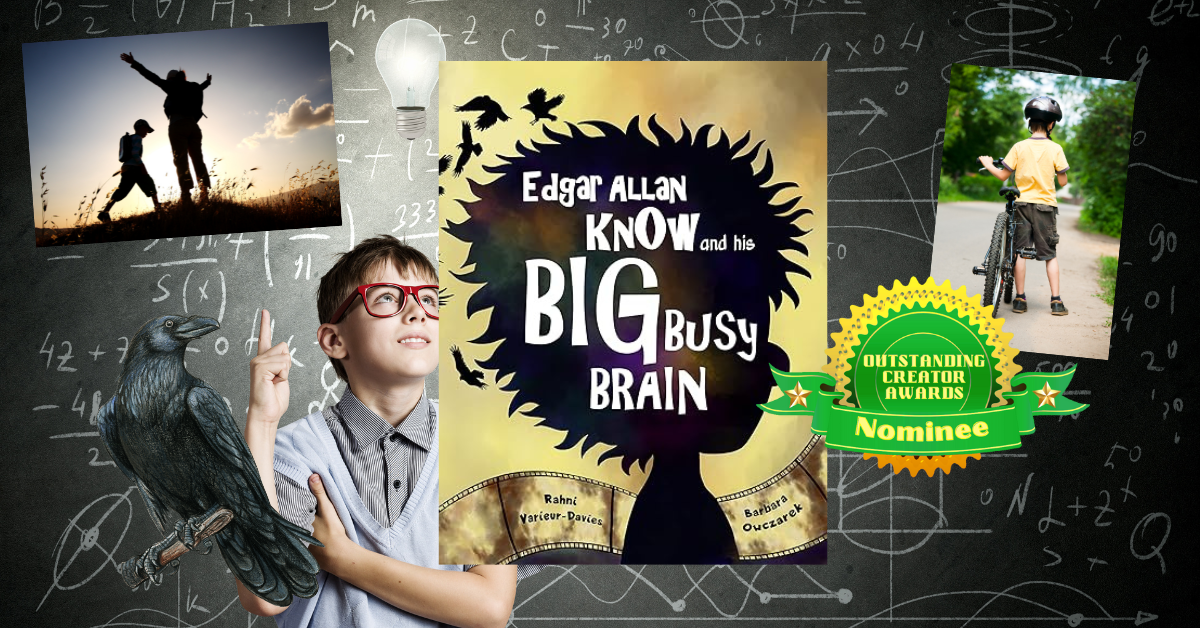



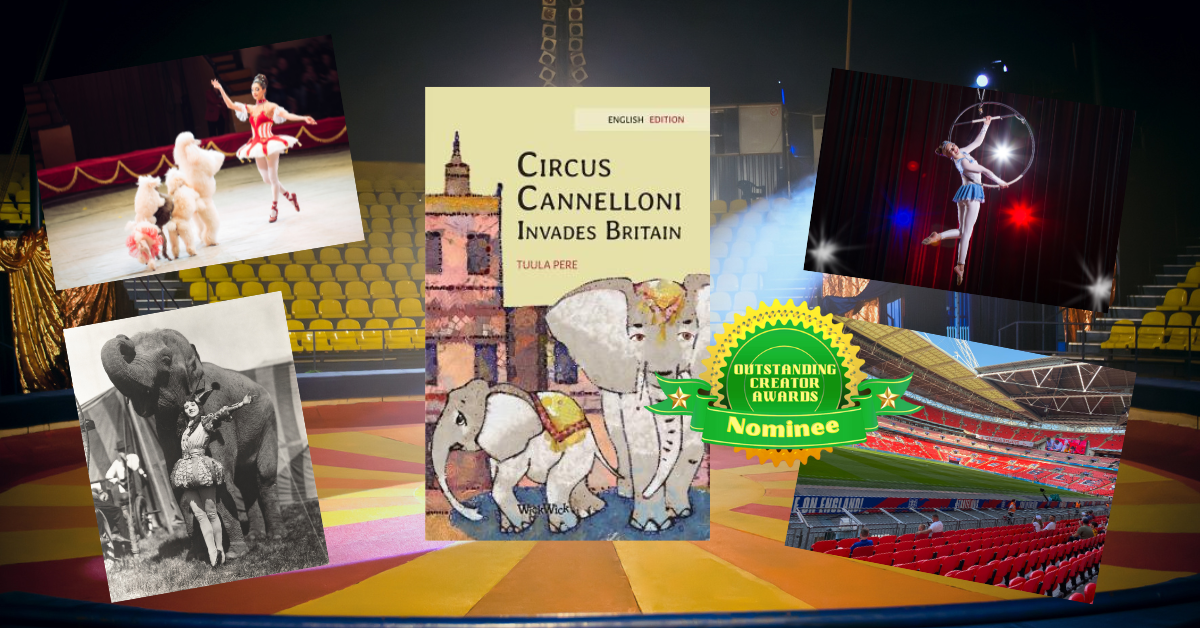
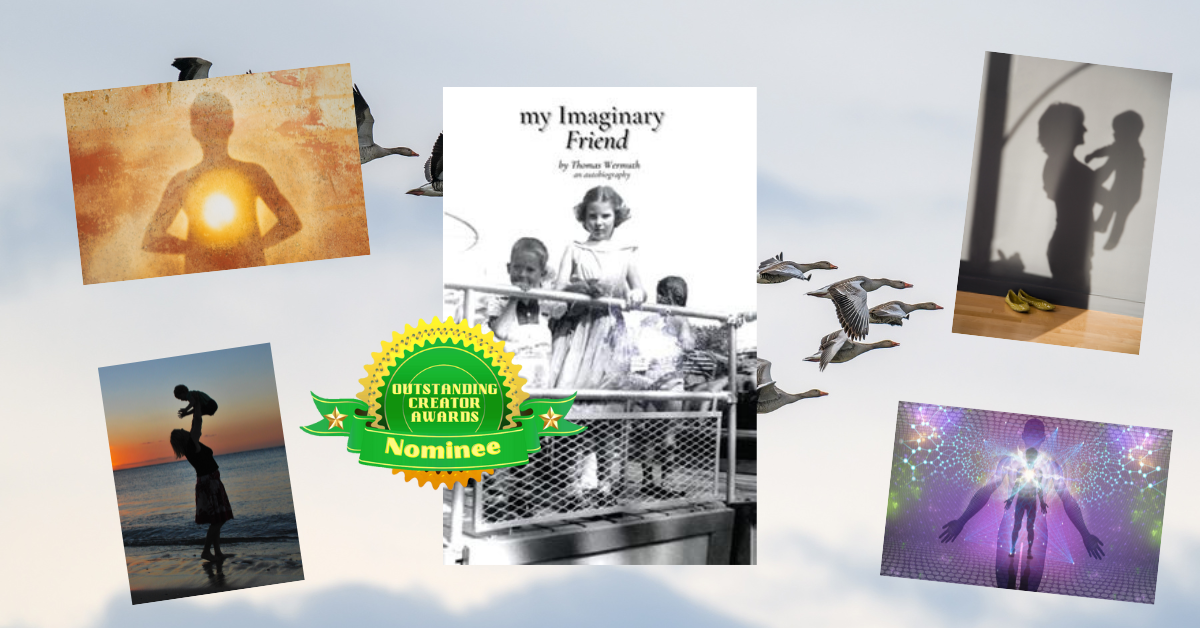
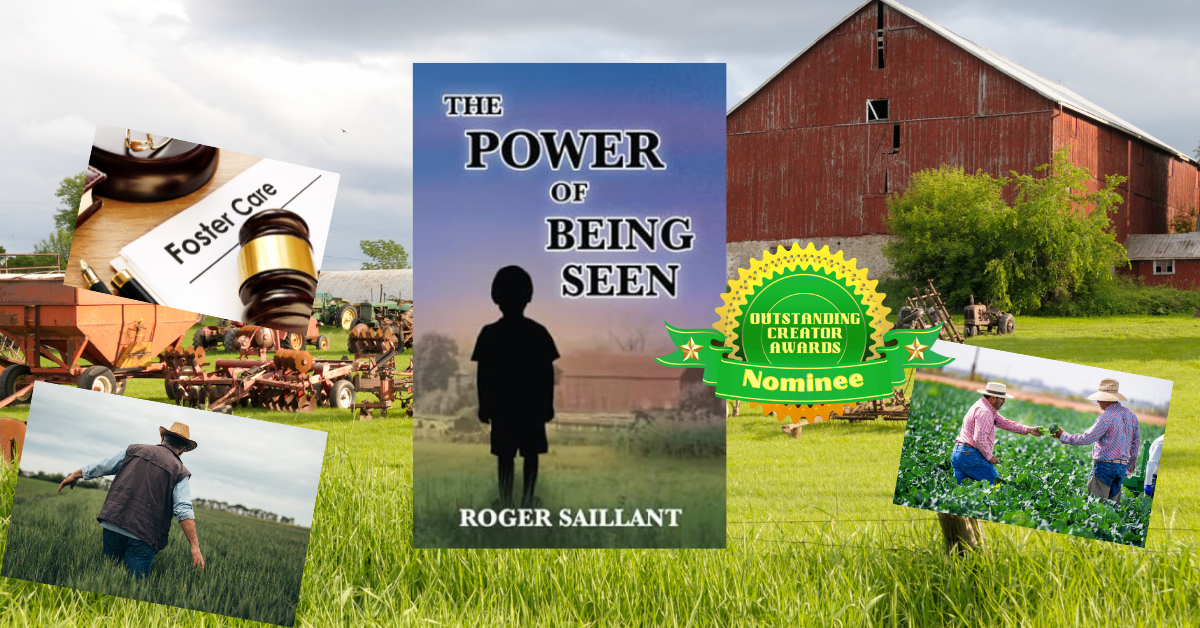

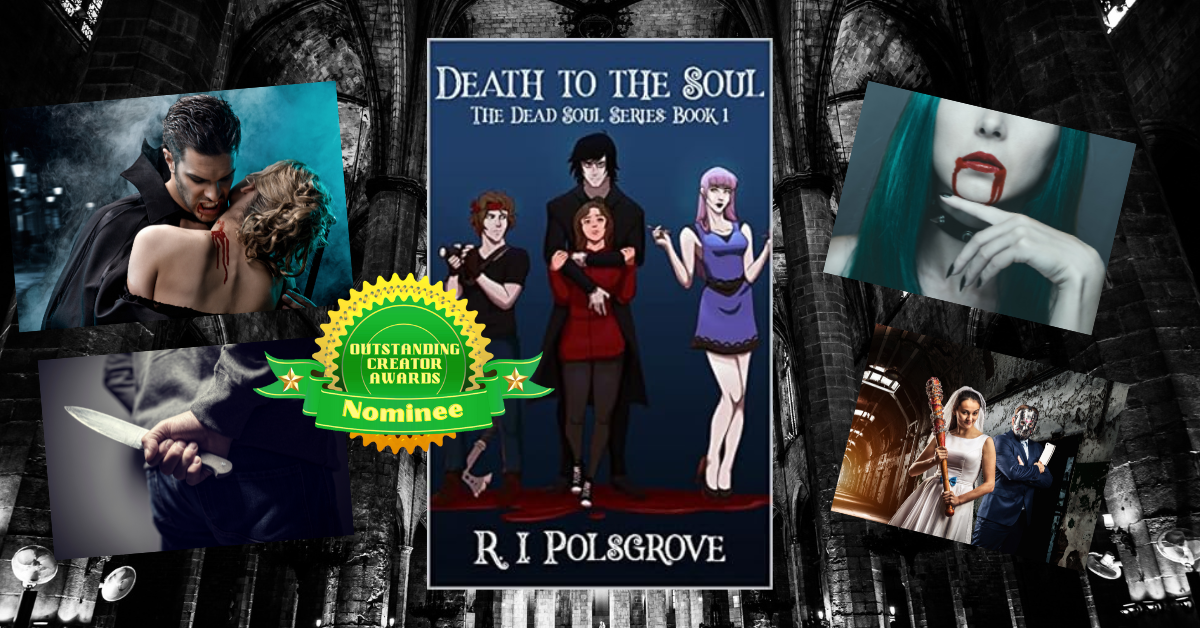
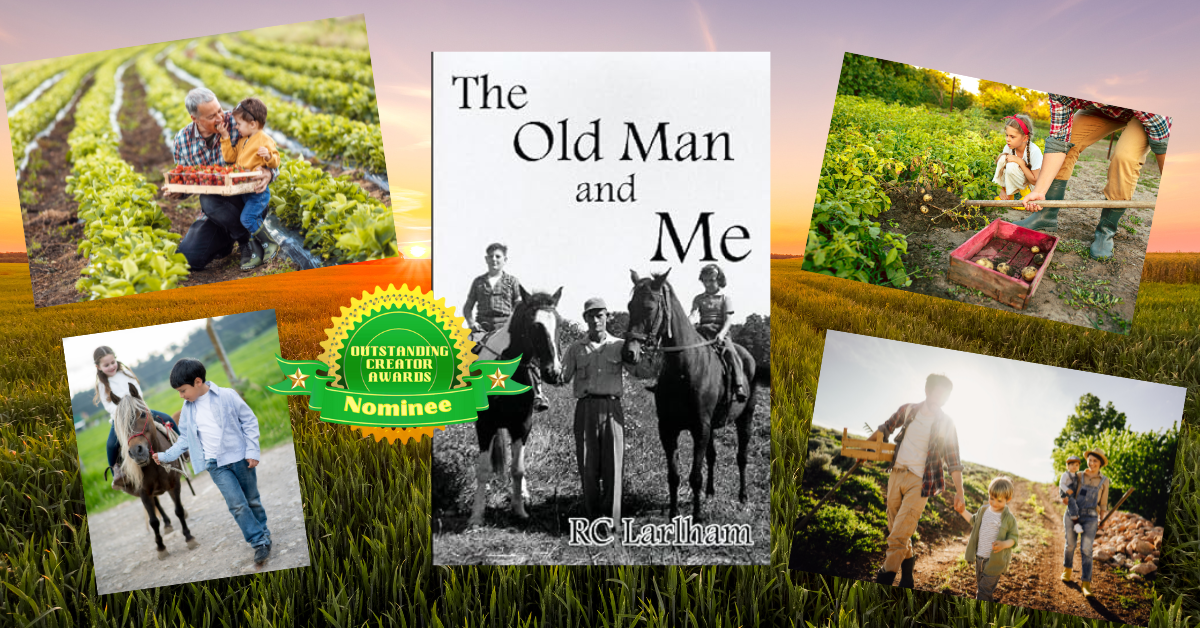
 RSS Feed
RSS Feed